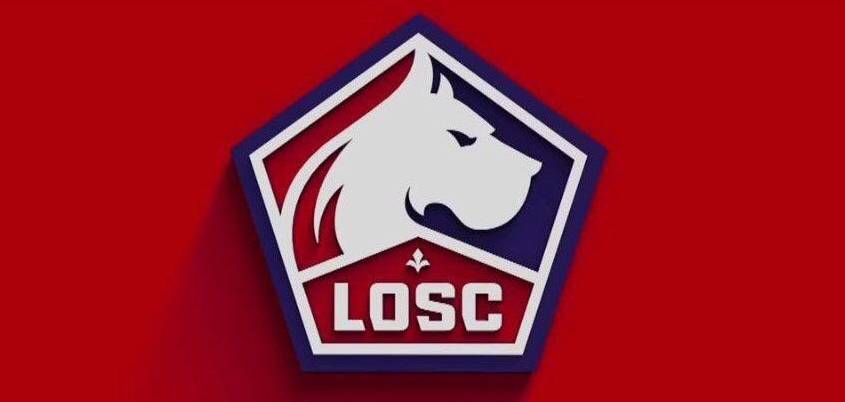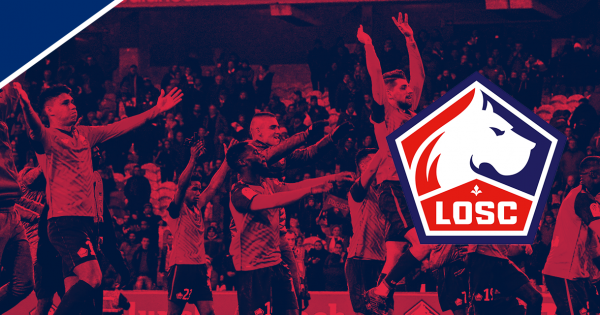Lille Part 1: Creating a Club Ethos

Lille Olympique Sporting Club (or LOSC) is in a paradoxical spot. They’re at the top of the Ligue 1 table, which could lead to their first Ligue 1 title in 10 years, but they’re also in financial ruin. How they got there is quite interesting. LOSC and Ligue 1 was expecting quite a bit of TV money, however MediaPro claimed they couldn’t make the payments to the clubs anymore, made an exit payment to get out of the contract, and now Canal+ has picked up the rights for half what MediaPro originally agreed to. Not only that, their ability to sell players’ transfer rights in the transfer market for a profit was hampered due to Covid. Needless to say, these two main hardships put the club in a tough spot financially.
Reported by the New York Times, LOSC owe about $140 million and, because their creditors didn’t believe the previous owner, Gérard López, could pay off the debts - they removed him. Now there are new owners, a new president, and they even fired arguably the best sporting director in the world, Luis Campos. In short, the club is in a tough spot, have a clean slate to work with, and whenever that happens in football it is really exciting, to me.
This leads me to Lille and why I will be doing a four part series on “Les Dogues.” I want to show where they could go from here and how they could operate in the future. Part 1 will be about building a Club Ethos, like I show in my article here. Part 2 will be about club finances and what they could do to become more financially stable. Part 3 and 4 will be about assessing the squad, and potential recruitment options. So sit back, relax, and enjoy this comprehensive deep dive and potential roadmap for Lille OSC.
Part 1: The Club Ethos
As mentioned in the article of outlining a club ethos, it is important to look into the club’s history, essence, and unique features of the city and club. From there, we should be able create a unique and honest portrayal of the club.
The City
- 4th largest urban area and conurbation in France, behind Paris, Lyon, and Marseille
- The conurbation (an extended urban area comprising of several cities) includes cities in Belgium, has a big Belgian influence, and, because of that, giving Lille the French “Capital of Flanders” nickname
- The city has had a constantly changing economy, which was first built on textiles and mining, but now focused on the service sector
- Passive throughout history as it’s been invaded numerous times from Austrian, Spanish, French, Belgian, and German troops
- Lille had a Ruler of Lille called Jeanne de Flandre and she created these places called Béguines where single or widowed women would live to get away from the traditional roles of wives and mothers by pooling together their resources and do business as they saw fit. These places are now apartments, apparently only for single women to keep the tradition
- In the “Heart of Europe” as it is connected and close to Paris, London, and Brussels. Also has the 3rd largest river port in France, behind Paris and Strasbourg
- Lille is a European Capital of Culture, France’s 3rd culture capital, has France’s 2nd largest art museum, the largest flea market in Europe, has several art museums, and named World Capital of Design in 2020
- 3rd Largest student population in France, behind Paris and Lyon, and 35% of the city’s population under the age of 25 (the national average is 30%)
- Name comes from “The Isle” where the Citadelle de Lille is located, which the city is built around. The crest is also in the shape of a pentagon, which is also the shape of the Citadelle
The Club
- It was founded in 1944 after a merger between two clubs and immediately had success by winning titles and cups
- Has had its ups and downs over the years, including revoking its pro status and being in financial trouble. Both times the city and fans came to its rescue. At one time the city itself became majority shareholder
- The origin of the nickname dates back to the 1930s, before the modern club was founded. Apparently, after a match against a Paris club, which was won by Olympique Lillois at the Parc des Princes, a Parisian journalist compared the players to mastiffs because they "never gave up”
- A fan described the club as “faithful and intense”
With the information above, let’s distill the info into three things to make the Club Ethos, which will generate further ideas:
- Connectivity: Lille’s continental and international appeal lie in their transportation network. They are close to Paris, London, and Brussels - Europe’s Art, Business, and Political hubs, respectively. Additionally they have international airport and seaport. However they also have a strong connection to their city through numerous cultural events and locations
- Guardians: The combination of the mastiff guard dog and the Citadelle de Lille, which are the main graphic elements of their crest, are perfect to summarize what the club has: a “never say die” attitude, and a structure to defend the city itself. To me, this just screams loyalty and being a guardian of the city that loves them so dear
- Adaptable: The city has pivoted in rule and in economies for centuries. It’s rolled with the punches of numerous wars and revolutions but the “capital” of the Hauts-de-France region is not only standing but thriving on global continental, and local levels
The Club Ethos:
Préparé à Tout Changement - Prepared For Any Change

Encapsulating all three unique characteristics was a bit difficult. However, by playing on the double entendre of all of the changes Lille has endured and a change, as in a change one makes when switching planes, trains, lanes, etc., it made things easier. The mastiff and Citadelle de Lille is a perfect representation of being prepared, as the city’s guardian, to protect, look out for, support, and be your sidekick for whatever comes your way. This club ethos can, as any should, be the guiding principal for staff and supporters when trying to be successful at and for Lille.
Here are some ideas from the club ethos, which I’ll dive deeper into the later parts of these collection of articles:
Marketing/Sponsorship:
I see this on a huge and vast scale because the word “change.” On a very basic level, LOSC should have a store in Lille’s international airport to add to the two stores they already have. One is at the stadium and the other is in the city centre, next to the city’s main train station. This is perfect. I’m sure having a boutique in the airport would add plenty of revenue and help people buy tickets who have some extra time on their hands while visiting.
To keep going on this point to the nth degree, not only should they brand umbrellas and other ways to keep up with the change of weather or scenery, like jackets, scarves, sunglasses, suitcases, etc., etc., they should also be trying to put together a deal with the airport and Lille transit system, to create membership-based perks to help people when traveling through one of them.
For example, I can see if you’re a LOSC Member, maybe there’s a lounge area in the airport, discounts when traveling to all of the shops in the airport. On a city level, maybe there’s a branded metro pass where LOSC Members can get a discount while riding the metro. Also for what it’s worth, I know Lille are selling what I’ve mentioned, but I didn’t see an umbrella or suitcase on the online boutique!
Furthermore, I can see LOSC helping people with changes in their lives. For example, what if LOSC became a community hub and had a daycare, gave language classes, offered university tutors, and so forth. Literally the opportunities here are endless.
Operations/Recruitment:
A big aspect and strength of the club should be around recruitment, succession planning, and player pathways; again all about change and rolling with the punches. Lille should strive to be the best in the world in recruitment to make all transitions and changes as easy as possible. This not only goes for players, but also for coaches, analysts, and any other position the club offers. The on-boarding, off-boarding, and processes should strive to be the best in the world and be an example for all businesses.
Included in this should be player pathways to make things easier. Their past owner still owns Royal Excel Mouscron, in my opinion it is the perfect Belgian club that Lille should partner with to help transition male players through their development pathway because of the location and playing level. What’s worth noting is I give credit to their past owner because he had this idea and, in fact, has several Lille mens players currently at the club playing on loan.
Lille II mens team play in National 3, the 5th tier of France and is simply too big of a jump for Lille’s youth players. If Lille cannot buy Royal Excel Mouscron, I’d recommend going after KV Kortrijk, US Boulogne, or USL Dunkirk as the club’s final step before the 1st team, and invest heavily in Lille’s 2nd team so they’re playing in the Championnat National, or the 3rd tier of French football. This goes without saying that the club should develop partnerships between themselves and other clubs within the Métropole Européenne de Lille and cities just on the other side of the border of Belgium, if possible. Lastly, the club needs to invest heavily in their women’s team, as they’re currently in Division 2, which is unacceptable for a club of this size. With proper investment, this can be another excellent revenue stream.
Playing Style:
Despite adaptability being the thing that makes Lille unique, I’m tempted to not focus on that for a playing style because the club will end up being not superb at anything and rather okay at a lot of things. That isn’t my recipe for success. I do see success in the club’s “never say die attitude” from the mastiff and the defensive nature from the Citadelle de LIlle, so I see the club playing something extremely energetic, looks to attack off the counter from high, low, and medium blocks, and counter presses. I don’t see the team’s strength being based on possession, so Lille would be very direct, constantly run in behind, and look to win second balls from anticipation and the opponent’s mistakes. This would be true for all Lille teams. LOSC mens, LOSC womens, and LOSC II.
There’s a lot more that could be put into the club ethos but for the interest of time and attention span, I’ll stop here. To go back to the original situation, if I was assisting the new owners I’d first do this exercise so we can all be on the same page, create one vision for the club, and create benchmarks and targets in order to understand what makes Lille unique and meet those goals in our own unique way. That unique way is to be préparé à tout changement.
As I’ve said in the past, creating a club ethos requires much more time, energy, and resources to do a comprehensive job. This is just a quick summary and paints a picture of how I might go about it. I’m happy to provide a more thorough Club Ethos, along with other analyses, for your club, league, or organization, upon request.
This concludes Part 1 on creating Lille OSC’s club ethos. To read the other parts, the links will be below as they get posted to the website.
Part 2 Part 3 Part 4
I encourage you to check out my consulting page, here, and sign up for my newsletter, here.
